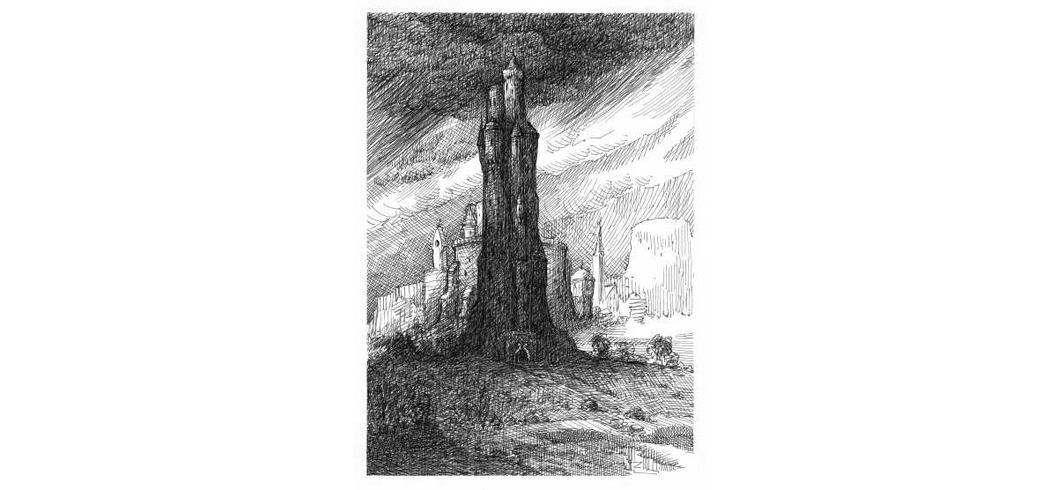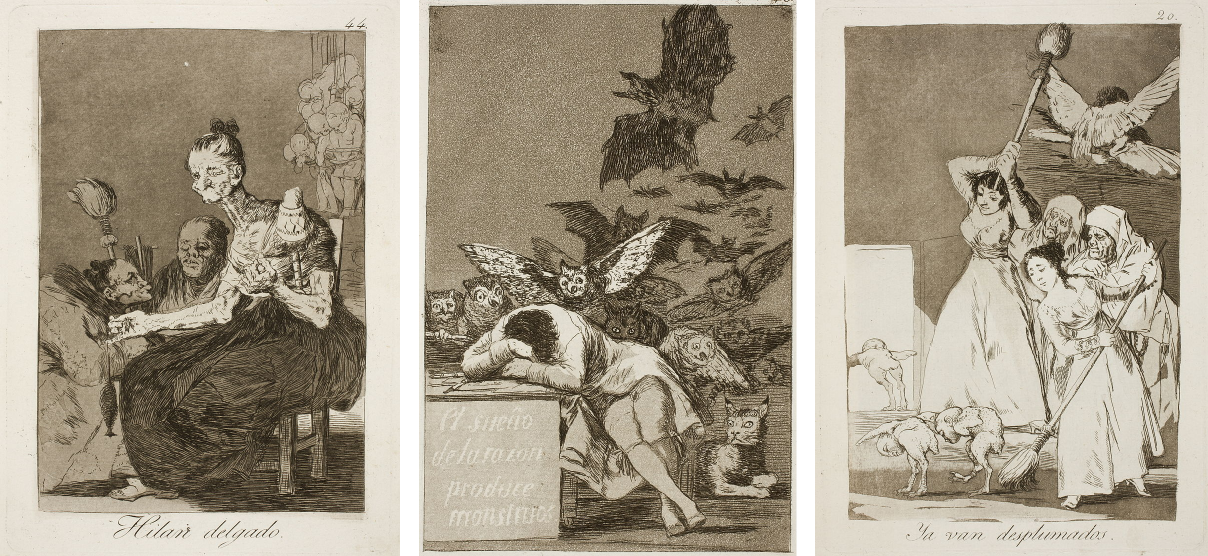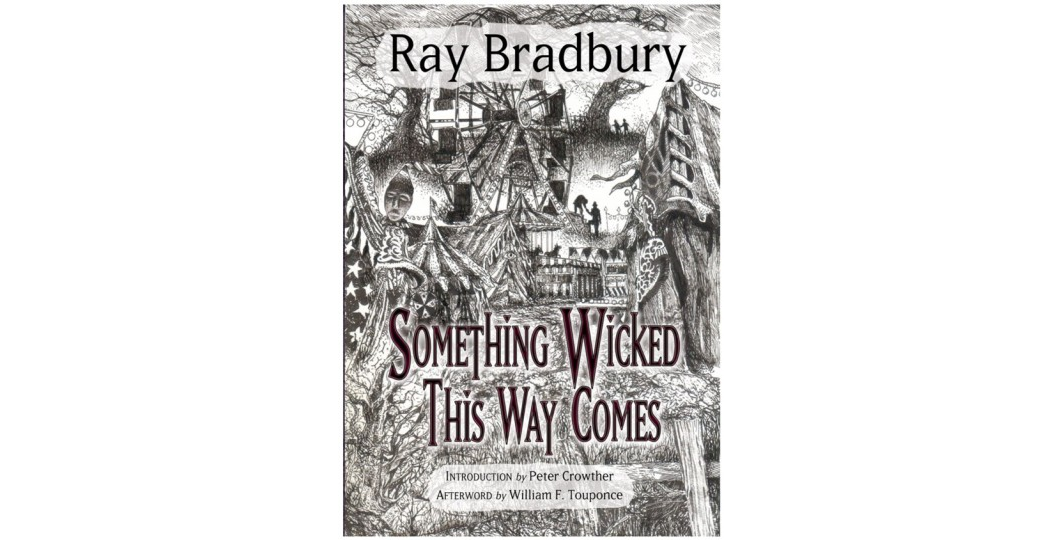Bradbury, Goya, and Peake
Discussing Some of Strangeland's Inspirations
The seed of
Strangeland’s narrative was sadness, and the soil in which it fell included the works of Mervyn Peake, Francisco Goya, and Ray Bradbury.
In the fall of 2016, my grandmother—who had been an anthropologist and in retirement became a genealogist—died after many years of suffering from dementia. Two weeks later, her husband, my step-grandfather, died as well. He had been a NASA engineer; it was he who got me my first computer in the early 1980s and taught me to program on it. The last years of their lives together were consumed by her illness and his vain attempts to design or divine some solution for it.
They had asked that I see that their belongings were properly distributed among the family, so after their funeral, I spent the rest of the day going through their small apartment, figuring out what should be sent to whom. Dementia deletes the world from the self and the self from the world. And a parallel physical deletion had happened as my grandparents had grown old and had moved into smaller and smaller lodgings, culminating in a little one-bedroom apartment and a tiny hospice room. The objects that remained were physical tokens of their most treasured memories: a box of slides from a trip to the Shetland Islands; a flag that had orbited the earth aboard the space shuttle; a family tree stretching back hundreds of years; a Western Union telegram calling my grandfather up for service in the Korean War; the beloved books of an anthropologist and an engineer; a bronzed baby shoe—dozens of such souvenirs of their trip through life. And of course all the pills, schedules, instructions, and plans that were the debris of the long defeats they both had suffered at the hands of illness.
Strangeland began as a way for me to process the sadness I felt about the whole situation. What it means to watch the slow-motion destruction of someone you love, thinking you can save her, but not being able to. The danger of seeing life as a series of puzzles to be solved. The way love can drag you down as well as lift you up. And also just the odd truth that if you dissected any one of us, you would find so many marvelous things. It’s not like my grandparents were more special than everyone else. Their adventures, quirks, relics—everyone has an allotment of those, a lifetime of eccentric knowledge and unique experiences. What would it be like to navigate those facets of another person? What would it be like to be burgled of those treasures by time and disease?
For me, the development of a game depends upon raiding my own stock of treasures and finding the right pieces, kept from other beloved games, books, movies, art, and experiences, that can be put together into the shape I’m imagining. The loss of my grandparents was a piece with particularly jagged edges, but I found they fit well with three sets of works that had long been important to me.
“In the presence of real tragedy you feel neither pain nor joy nor hatred, only a sense of enormous space and time suspended, the great doors open to black eternity, the rising across the terrible field of that last enormous, unanswerable question.” - Mervyn Peake, Titus Groan
As Victor, James, and I began discussing
Strangeland, the first piece I took was from Mervyn Peake’s
Gormenghast series. Anyone who has read it knows that the titular castle is as much the central “character” as its nominal protagonist Titus. (Consider the first of its features encountered by the reader: the Tower of Flint, “patched unevenly with black ivy, arising like a mutilated finger from among the fists of knuckled masonry and pointed blasphemously at heaven. At night the owls made of it an echoing throat; by day it stood voiceless and cast its long shadow.”) I wanted our setting, like Gormenghast, to have a personality, so that in exploring the place, players will feel—as I did in exploring my grandparents’ apartment—that they are exploring the imprint of its inhabitants.
“The world is a masquerade. Faces, costumes, voices—all pretend. We all wish to appear as we are not, we deceive ourselves, and in the end, we do not even recognize ourselves.” - Francisco José de Goya y Lucientes, Los Caprichos (6)
The next treasure from my trove came from Francisco Goya, whose art I studied while living in Madrid 20 years ago. In college, I wrote (though never released) a mid-length work of interactive fiction in which the player visited a gallery of a pseudo-Goya’s works and discovered he could (and indeed must) enter those works and engage in various adventures within them. The force Goya exerted on me has, if anything, grown over the intervening time. It is not just specific paintings (such as the famous image of Saturn devouring his child), but the overall mood and mentality of his work as a whole. The distillation is, for me,
Los Caprichos—a series of captioned etchings that convey the way in which supernatural horror springs from the everyday misery that is all around us. The characters of
Strangeland are a blend of
Gormenghast’s eccentric weirdos and
Los Caprichos’s grotesque “ordinary folk.”
“He expected me to stay with the family to mourn, but I got out of the car anyway and I ran down the hill toward the carnival. It didn’t occur to me at the time, but I was running away from death, wasn’t I?” - Ray Bradbury, as interviewed in “Mr. Electrico”
Finally, when Victor suggested a carnival for the setting, my mind naturally turned to Ray Bradbury, the great humanist of science fiction, who came time and again to the theme of carnivals (most famously in
Something Wicked This Way Comes). With Bradbury, uncanniness and horror are used in service of a fundamental decency: to show us the humanity in what seems “freakish” and the freakish inhumanity that can fester inside anyone, no matter how outwardly conforming. That moral compass (albeit in the hands of a much less able navigator than Bradbury!) was something for me to use here, too.
To be clear, these aren’t the only influences or even the main influences on
Strangeland. We found inspiration in games like
Sanitarium and
Weird Dreams, shows and movies like
The Prisoner and
Eraserhead, religious and mythological works, etc. The work of creating
Strangeland is weaving all these disparate strands into something that holds together—and more important, is satisfying, fun, and fresh as a game.
The seed of
Strangeland was sadness, but it blossomed into hopes, among which is the hope that we will find a way to share the souvenirs the three of us have treasured from our own trips through life.
I’ll end with a poem from my great-aunt, whose “Inheritors” was such an inspiration for
Primordia. A lifelong beachcomber (literally and metaphorically), she describes a similar hope... that the collector might herself undergo a sea-change and yield a treasure for someone else to collect:
Last Testament
Sea, sky and sand,
Remember me,
Beloved three,
Be kind to me;
I loved you defenselessly.
Eternal, primeval,
Holy trinity,
Wash, shrive and use me,
Tenderly;
I was your creature when I was alive.
Master makers of jeweled toys,
Shape me and shine me into a sea prize
Found by a boy’s
Quick eyes in glad surprise.
Sea, sky and sand,
Let me one day
A small child’s happy summer memory.



























